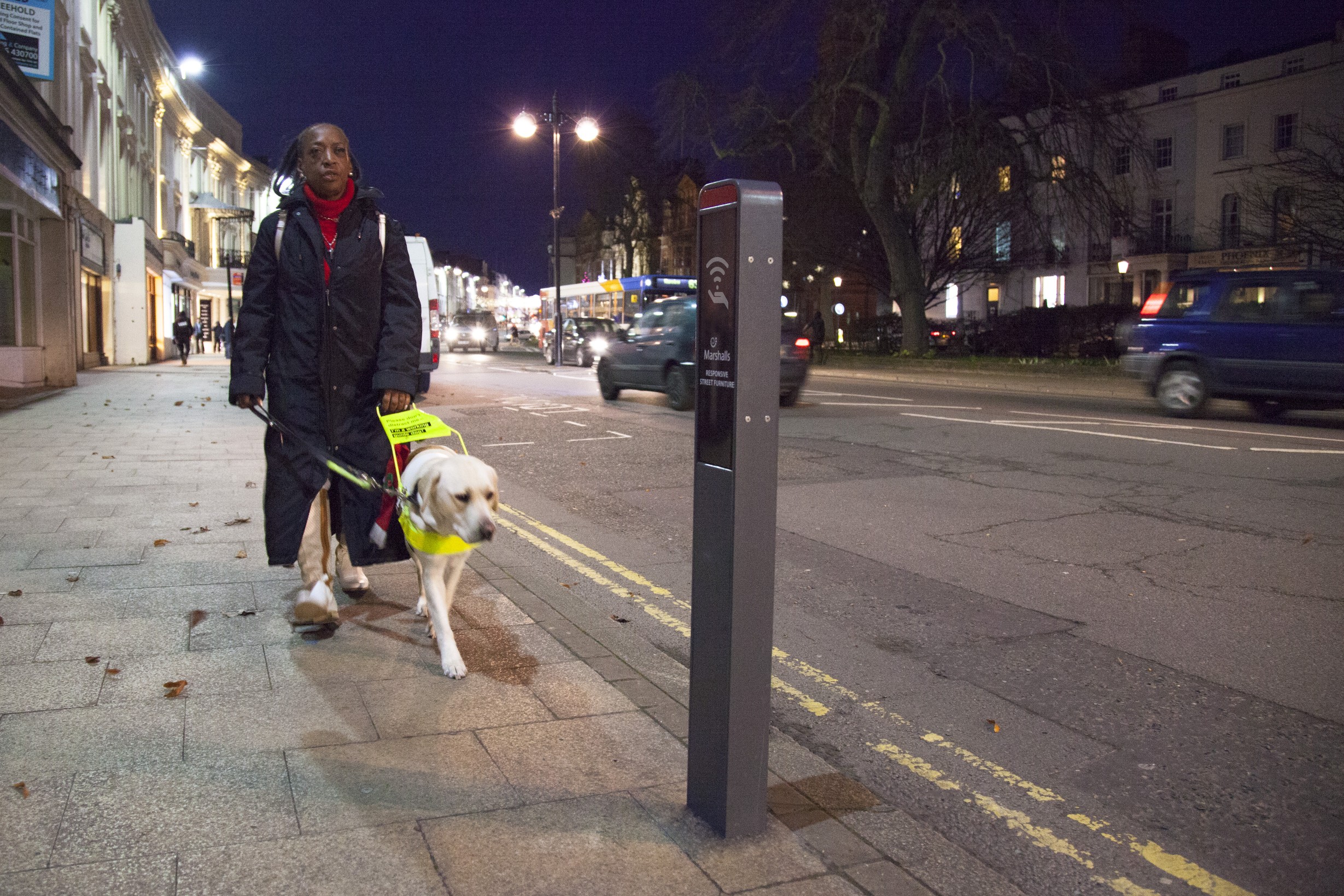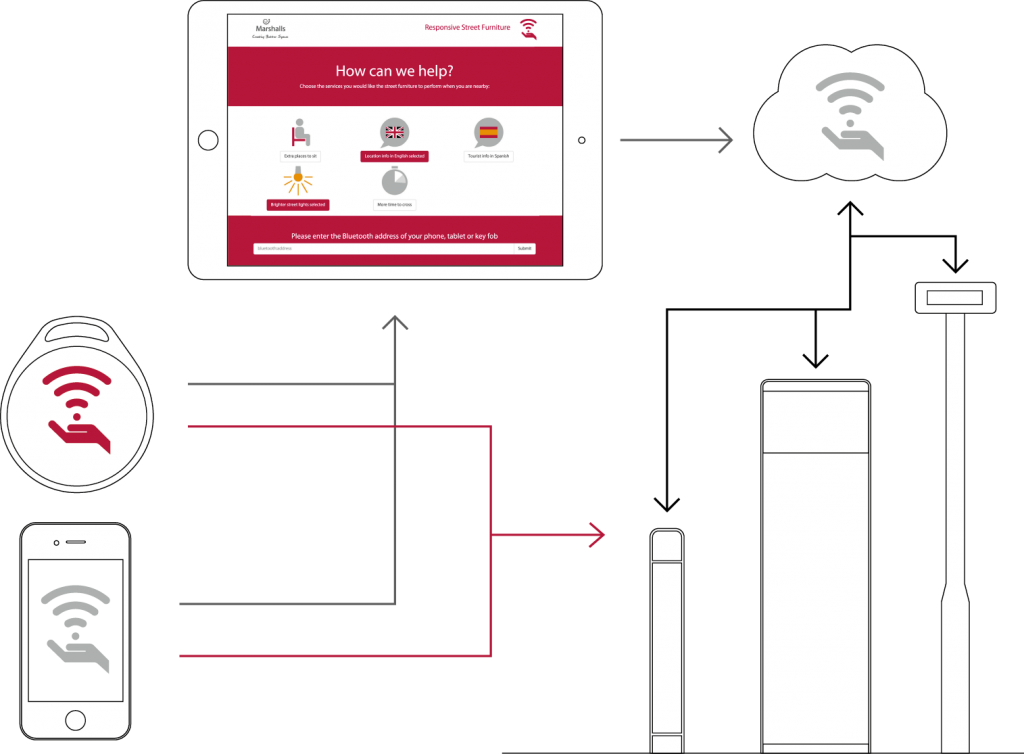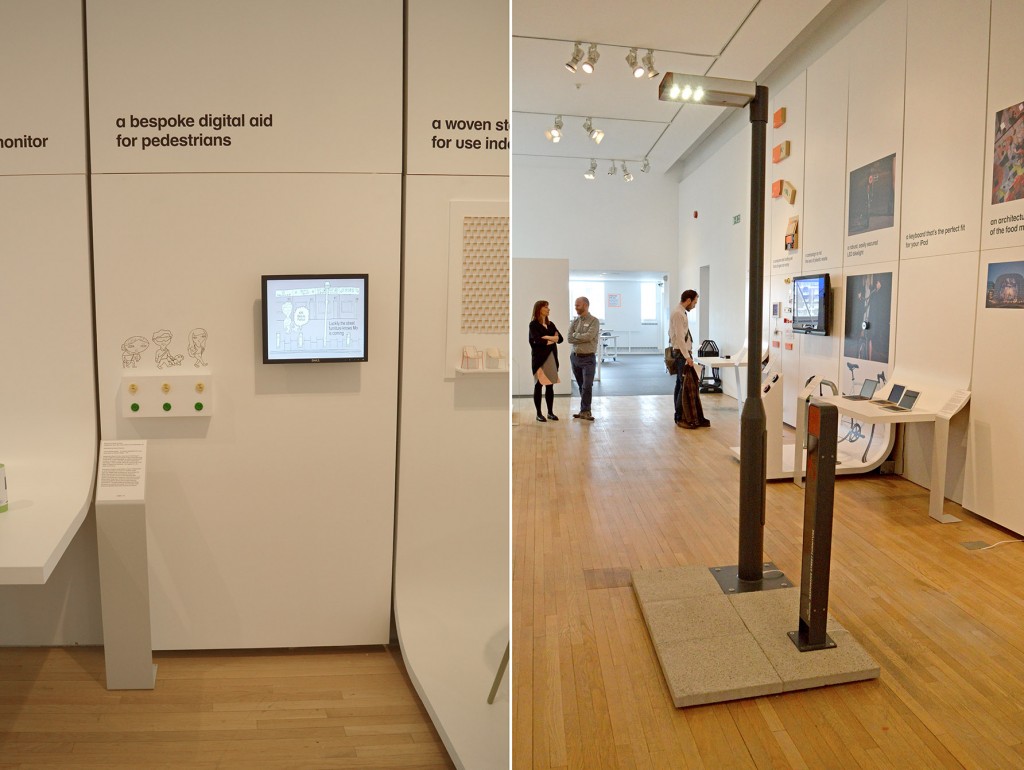
Created in partnership with landscaping manufacturer Marshalls, Responsive Street Furniture uses digital technology to make streets work better for people who find moving around difficult for all kinds of reasons. It brings the adaptability of digital devices like iPads to the fabric of the city, allowing it to change to best suit the needs of the individuals who are using it. These changes include brighter street lighting, audio information, extra places to sit and more time to cross the road.
Working on research shadowing disabled people as they move through public space I was struck by how much of the design of our streets was defined by a tradeoff between the needs of different people. Features that may advantage one group (like more places to sit) might disadvantage another (by reducing the width of the pavement for example). In contrast accessibility in the digital world of smartphones, tablets and websites is all about adaptability. When a device or application can adapt it can meet the needs of an individual much more completely, rather than trying to be the best compromise between everyone.
Responsive Street Furniture is the result of applying this principle to the street, of moving away from a one-size-fits-all approach towards an adaptable one.
We are using the latest connectivity technology to deliver a natural experience to users of the system. In contrast to so much of the activity in the ‘Smart City’ space we are collecting and storing as few data as possible. Users of the system only need to register once, logging the help they would like the system to provide and the ID of their smartphone or key fob. No e-mail address, phone number or any other personal details are required. From then on whenever their phone or fob is detected by a responsive item it will automatically provide the help they had requested without them needing to do a thing.
Prototypes of Responsive Street Furniture were available to view (and try out) as part of the 2015 ‘Designs of the Year‘ exhibition at the Design Museum in London from the March 2015 to April 2016.
A responsive bollard has was also installed as part of New London Architecture’s Never Mind the Bollards exhibition on Store Street. Below is a video of it working.
Kind things have been written about the project in Fast Company, Dezeen, PSFK, City Metric, Smithsonian Magazine and Wired. Responsive Street Furniture was also selected as a finalist in Fast Company’s Innovation by Design Awards in 2015.
The first responsive items, a lamp column, monolith bollard are available to buy from the Marashalls Website.


